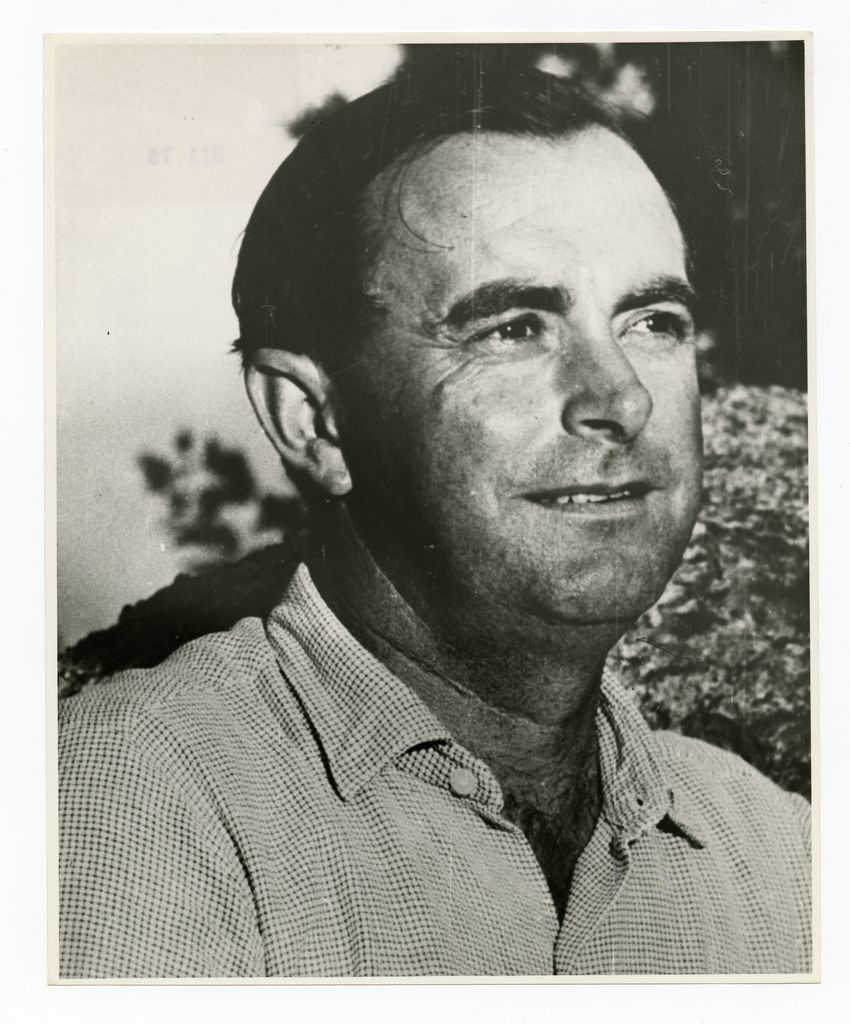 |
| Red Devil Dean (cropped image) |
***STOP PRESS*** See the blog article expanding this one
The Unseen Frank Bellamy Exhibition has been mentioned on the blog
a few times before and today we can close another mystery.
Chris Harris got in contact with me and innocently said:
I helped curate an exhibition called the Unseen Frank Bellamy, at a small gallery in Brixton in the late 80s/early 90s .
We got artwork from his wife Nancy and presented it in our basement space. I still have a copy of the Escape magazine we put out at ACME comics with a brochure inside and some original artwork.
The most significant is an exquisite watercolour treatment for a character called Red Devil Dean - never taken up I think.
It still has his hand designed dust sheet, tracing paper insert and the treatment.
Would you like me to send you a photo?
What would you say? OF COURSE, YES PLEASE etc etc. Fortunately I didn't scare him off and he was good to his word!
The next email came with attachments and I was bowled over by them. Remember the catalogue for the exhibition called this "Red Devil Dean
Suggestions" - well it's obvious from the piece that Bellamy was trying out for something. The title on the artwork is
"Suggestions for Red Devil Dean and Tug Wilson" and as Chris states he bought the artwork itself, plus an 'insert' which shows an amended Tug Wilson portrait
plus a cover sheet to protect the artwork with the title on it.
All the artwork can be seen on my website by following the
'More...' link on the
Unseen Bellamy page
 |
| The artwork for Red Devil Dean |
Bellamy often drew these overviews of characters before starting the assignment, such as the
Garth one and others such as the Thunderbirds characters, Heros the Spartan, David the Shepherd King and Fraser of Africa. However, he swore to never having used 'white-out' or Tippex, to correct art (but that didn't mean
someone else used it on his artwork!) But this is the first time I've seen an overlay like this which shows an alternative piece of artwork.
  |
Express Weekly 3 March 1956, No76
Drawn by Ruggero Giovannini |
So what about the title? Is the character a real person? Unlikely. The only references I've found to Red Devil Dean is when a person is called Dean and they gain this nickname. And the comic strip in the Express Weekly of the eponymous title illustrated above. I asked Steve Holland about this and he replied:
As far as I know there were just three artists on this strip -- but I've not seen all the episodes (nor, I should add, do I know anyone who has all the issues). Desmond Walduck was the original artist when the strip started in issue 41 of Junior Express Weekly (2 July 1955); Ruggero Giovannini took over with issue 59 and was the artist when it became Express Weekly (issue 74); and Bosch Penalva took over in issue 103 (8 September 1956). I don't know when the strip ended. Probably not long after in 1956 or maybe 1957.
[Norman: I've seen Express Weekly #84 (28 April 1956) and it does appear there but not in #156 (14 September 1957)]
The only episodes I have are in the issue 109-120 region in which Red is some kind of adventurer; in this story he's tracking down some crooks trying to rig the football pools and the crooks frame him for an attempt to blow up Parliament. Doesn't sound like the sort of thing that would involve a couple of British soldiers.
**ADDITION*** (Aug 2013) David Slinn states:
"I can add to the information Steve Holland provided, in that the series was dropped from Express Weekly at the end of December 1956, coinciding with ‘Wulf the Briton’ being moved onto the cover and a number of new strips and features being lined up for the New Year."
So we still don't know and it seems unlikely Bellamy was commissioned to draw this strip as the dates are wrong. At the time of the strip beginning he was working on winding down
Swiss Family Robinson, drawing
Paul English and starting
King Arthur as well as doing illustrations for
Boy's Own Paper and
Lilliput!
I wondered about the insignia on the art and a kind 'Internetter' pointed me to the Wikipedia article on
Combined Operations Headquarters As all three services were involved the only clue I gained was that landing craft and commandos are relevant but more of that later.
The Bellamy illustration above shows a redhead who is called Ted Dean. Could this be the origin of the name - redheads getting called "Red Devil"? No idea. Also I wondered if there was a player for Manchester United who was called Dean (as they are known by the nickname the Red Devils) but I can only find one name and he hardly played at all! Any guesses gratefully received!
Lastly to add a little something else to the mystery, our generous friend Jeff Haythorpe sent me a picture that he always wondered whether it was Red Devil Dean
 |
| A boat (landing craft?) afloat with four soldiers, one of whom is redheaded! |
He has promised a better scan so when that arrives I'll replace this one. But again it may be part of the above story. The signature is of the same pre-1950 period from what I can see.
So there you go a mystery solved (we now know what the
Unseen Bellamy Exhibition refers to, but have a greater mystery as, like
Anthony Falloway, we don't know if and where and when this was published!. If you have any ideas about the name's origins it would be interesting to hear from you.
My email is





























